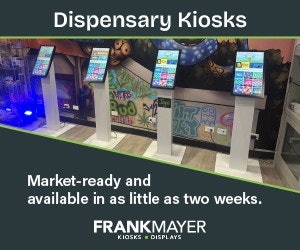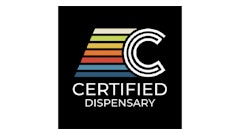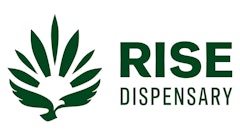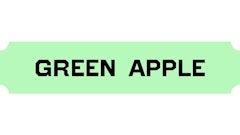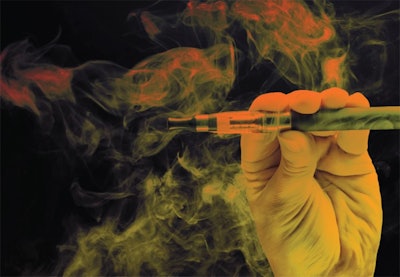
While that’s not surprising given vaping’s surging popularity, no one wants to see industry growth hindered or environmental responsibility unfulfilled. So, what’s a caring, environmentally conscious dispensary to do?
Even in this environmentally conscious industry, helping customers recycle vape cartridges, batteries and disposables isn’t as easy as it could be. But don’t despair. A look into recycling options and realities can help your dispensary become part of the recycling solution.
What’s Standing in the Way of Dispensary-Based Programs?
Even when vape companies, dispensaries and consumers harmoniously agree on vape recycling measures, regulatory hurdles may intervene. In many jurisdictions, rapid and frequent regulatory changes have left dispensary owners and employees edgy when it comes to recycling cartridges and pens.
Prior to January 2018 regulatory changes, California cannabis product manufacturer OMG Farms seized the chance to take on the issue. The company, with a disposable vape pen as its flagship product, developed a vape recycling program that goes beyond the vape collection boxes seen in many dispensaries.
OMG Farms rolled out an incentivized program rewarding dispensaries with discounted future orders based on the number of devices collected for recycling, accommodating both OMG products and other brands. But the advent of 2018 regulations complicated OMG’s well-intentioned plans and caused dispensaries to halt in-store recycling collection.
“Effectively, the regulations prevented individuals from bringing products back into the store after they were sold,” OMG Executive Vice President Ryan Miller explains. As in many states, exceptions only covered defective cartridges, or devices returned to the store where they were originally purchased, where they are then rendered unusable by being destroyed, and unrecyclable by being mixed with other cannabis waste.
California isn’t alone in vape recycling challenges. Dylan Donaldson, owner of Colorado-based Karing Kind Labs and Karing Kind dispensary faces the issue as both vape producer and retailer. “We’ve been selling vape pens on the market for upwards of six years, and we’ve always struggled with recycling at the retail dispensary as well as manufacturing and wholesaling disposable vape cartridges,” he says.
“One of the biggest hindrances in the state of Colorado is we can’t have open and used remnant of marijuana products on the licensed premise. We’re not even allowed to be a collection point, which is something we’ve always wanted to do,” Donaldson says. “The legality of it has really hindered us in Colorado.”
What Types of Vape Recycling Programs Has the Industry Seen?
Many dispensaries have recycling programs in place that focus on non-vape items. Customers at Utopia Gardens in Detroit, Mich., for example, can return pop-tops and pre-roll tubes, which the dispensary processes, cleans and re-uses.
The idea of recycling cannabis-related waste is appealing to Utopia’s customer base. “Our customers really love that they can bring their containers back for recycling,” budtender Mary Sharp shares. But, the program doesn’t cover vape batteries or cartridges because the dispensary lacks a viable, state-allowed option for recycling them.
While some companies, like OMG, find themselves in a state of regulatory-induced limbo, at least as far as dispensary-based vape collections go, several vape producers have created recycling or collection-and-disposal programs.
Some innovative programs have offered consumers postage-free returns for batches of empty cartridges. Others pair in-store dispensary collection envelopes with promises of swag rewards. But the most common approach has been simple collection boxes that count on the intrinsic satisfaction consumers feel by dropping off used cartridges and pens at their local retailer, instead of slipping them into the trash at home.
But dispensary collections haven’t always worked as planned. Several retailers contacted by Cannabis Dispensary shared stories that confirm Miller’s reports of stockpiles of collected cartridges, recycling outlets reticent to accept cannabis-contaminated products or cost-prohibitive recycling fees.
From California and Oregon to Illinois and Michigan, dispensary staffers also expressed concerns about risking legal sanctions until cannabis-friendly recycling regulations are in place. Some had a brisk “no comment.” Others said the issue was too controversial, asking instead to stay under the radar on what their dispensary does or doesn’t do.
At Karing Kind, Donaldson says wholesale clients generally understand the regulatory limitations vape recycling initiatives face, but retail customers don’t. “On the consumer-facing side of things, the end user is definitely having conversations with us about it in our retail store. Our job is to educate them,” he says.
Karing Kind staff tells customers where and how consumers can recycle vape products, why the dispensary can’t, and what the company wishes it was able to do. In the end, staff encourage consumers to do their part and recycle responsibly.

What Kind of Impact Can Industry Recycling Efforts Make?
With the vape market consistently tracking as one of the cannabis industry’s fastest-growing segments, the volume of potential waste and consumer kickback is considerable. Donaldson emphasizes that the point of effective collection programs isn’t just to keep cartridges and batteries out of the garbage, though that’s a start. The real goal is to have the materials re-used for other purposes.
As Miller explains, recycling initiatives already exist in the e-cigarette industry that can work as blueprints for similar cannabis programs. He notes that, with the exception of the cannabis-holding portions of vape pens, materials from plastics to electronics and batteries can be recycled or reused.
However, recycling programs come with a price. To be cost-effective, Miller says the programs must be done at scale, which he feels puts the onus on vape vendors for the recycling logistics and on dispensaries as collection points. Much back-end work, such as figuring out a true recycling program for the industry that’s cost-effective and compliant, remains to be done before stockpiles of collected cartridges and disposables go beyond dispensary and vape company store rooms and materials are recycled.
Karing Kind focuses on what’s possible in the current regulatory environment. “One approach we decided to take about three to four years ago, especially in our vape product line, was being more conscious about the type of hardware we’re buying,” Donaldson explains.
“One of the limitations, of course, is the battery. The batteries have to be recycled in a certain way, just like a cell phone, for example. We encourage consumers, on our packaging, to take them anywhere you recycle batteries, such as an office supply warehouse,” he says.
“Another thing we’ve done with non-battery components is [become] very aware and particular about the components they’re being manufactured with. For example, on the vape cartridge side of things, we have found a cartridge that doesn’t use any glue or any plastic. It’s all glass and metal and ceramic. All those components together can be easily recycled in the recycling bin in your home, and that’s what we encourage people to do,” Donaldson explains.“One of the biggest hindrances in the state of Colorado is we can’t have open and used remnant of marijuana products on the licensed premise. We’re not even allowed to be a collection point.” Dylan Donaldson, owner, Karing Kind
What’s Ahead for Vape Recycling and Positive Change?
Miller expects that the conversation about vape waste and environmental responsibility will grow louder among vape consumers and the general public. “The No. 1 issue people had coming up to us—both people who had purchased our product or who had not purchased our product because of this issue—is the waste piece,” he says.
Even the word “disposable” turns off many consumers who avoid all disposable products because of potential waste. That’s one reason that OMG advocates for shifts in industry-wide semantics from “disposable” to “all-in-one” or “ready-to-use.” But the bigger question remains: What happens to recyclable and reusable materials in the millions of vape products loyal dispensary customers have embraced?
Right now, consumer concerns may not outweigh the risk to dispensaries in some jurisdictions. But change is afoot. As one example, OMG proposed modifications to the California Code of Regulations to allow the return of “cannabis-contaminated hardware products (such as vapes)” to licensed retailers as part of distributor or manufacturer recycling programs. Miller reports the issue is on the agenda for an upcoming meeting of the state’s Bureau of Cannabis Control.
Donaldson urges businesses to get involved. “Lobbying the state to see if there’s some way to get some sort of recycling program in place—in a legal, regulated form that we could really make a difference in that aspect of our industry—would be beneficial,” he says. “I would say there’s been very little regard for the environmental impact. It’s something that’s been overlooked.”
Only you know what’s best for your dispensary and your customers as the industry and regulators sort out this issue, but expect to hear more questions from consumers about vape waste and how you and your vape vendors are addressing it.
“It doesn’t take any great strategist or crystal-ball owner to see that the vape convenience products are going to dominate the new users coming in and start cutting into a lot of the use of existing users,” Miller says. “If you have any considerations in your daily life about being green or recycling—and we’re from California, so you just kind of breathe it in here—you understand you have to start looking at options.”
The way Miller sees it, being proactive and part of the solution is good for consumers and for you. “This is very important for retailers,” he says. “The industry is pretty green and wants to recycle on its own accord. But this is something that, if you have a good program and you’re able to convey that to people, it’s good for your customers and for your bottom line.”
Top photo: © gawriloff | iStockphoto





